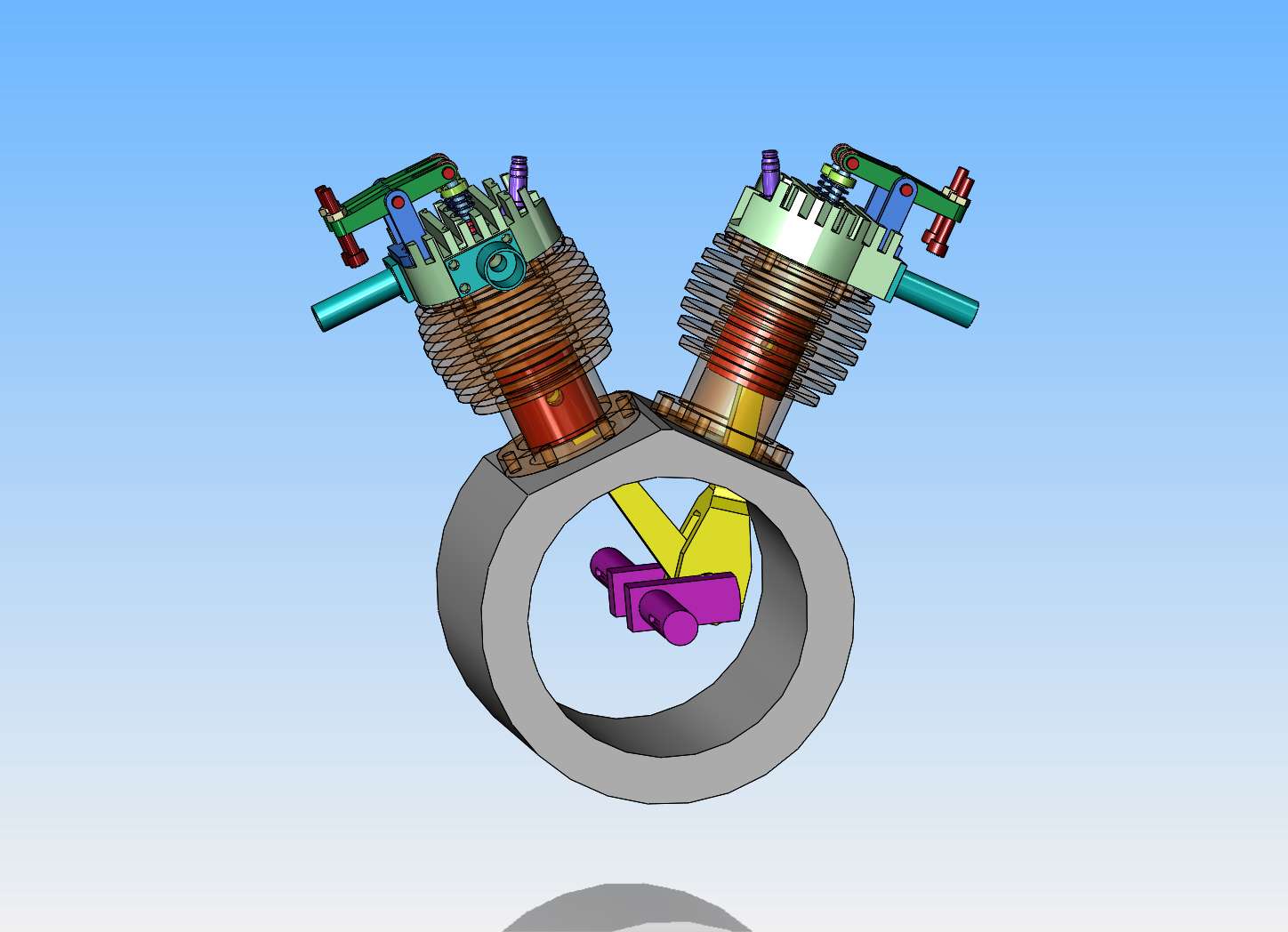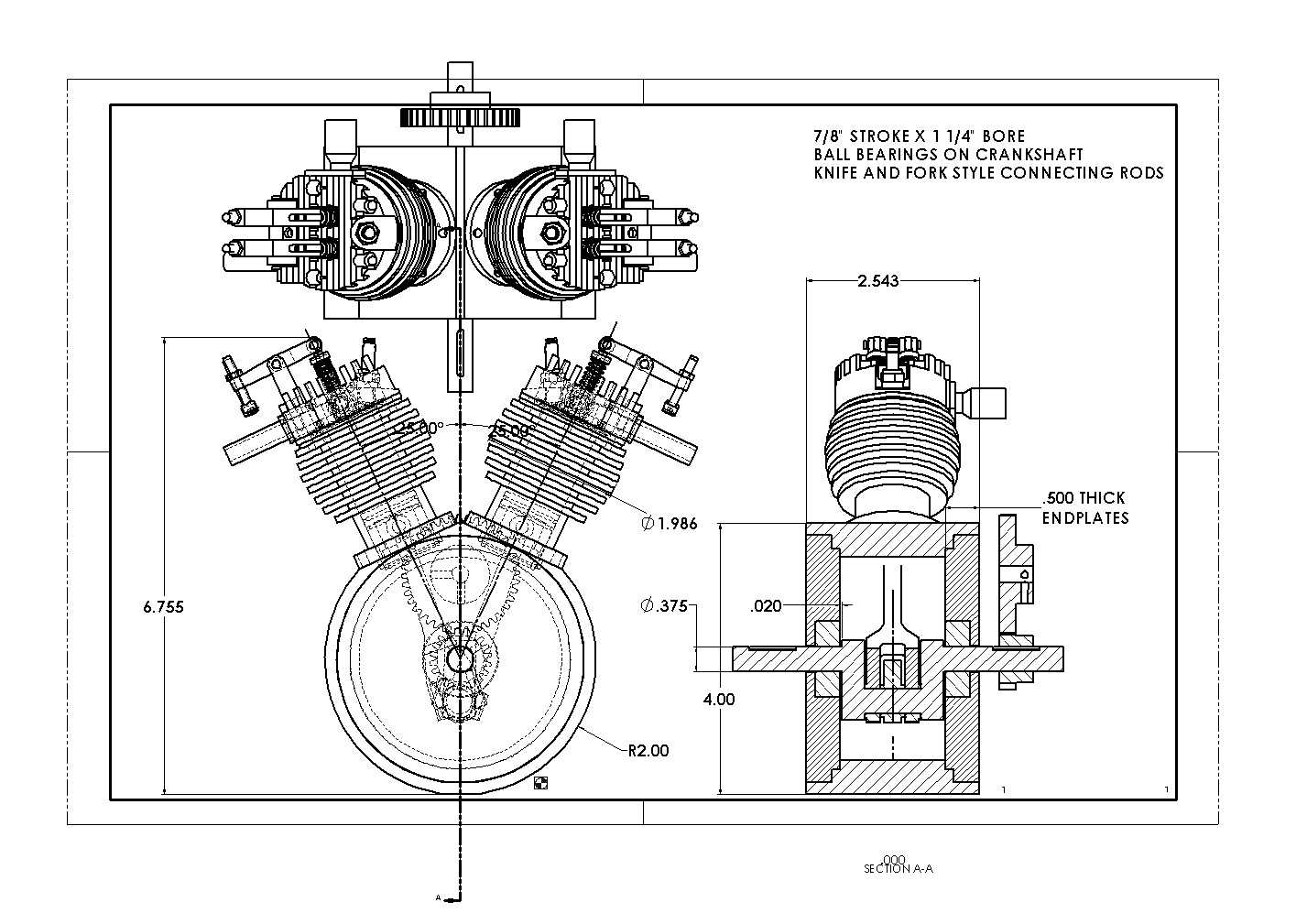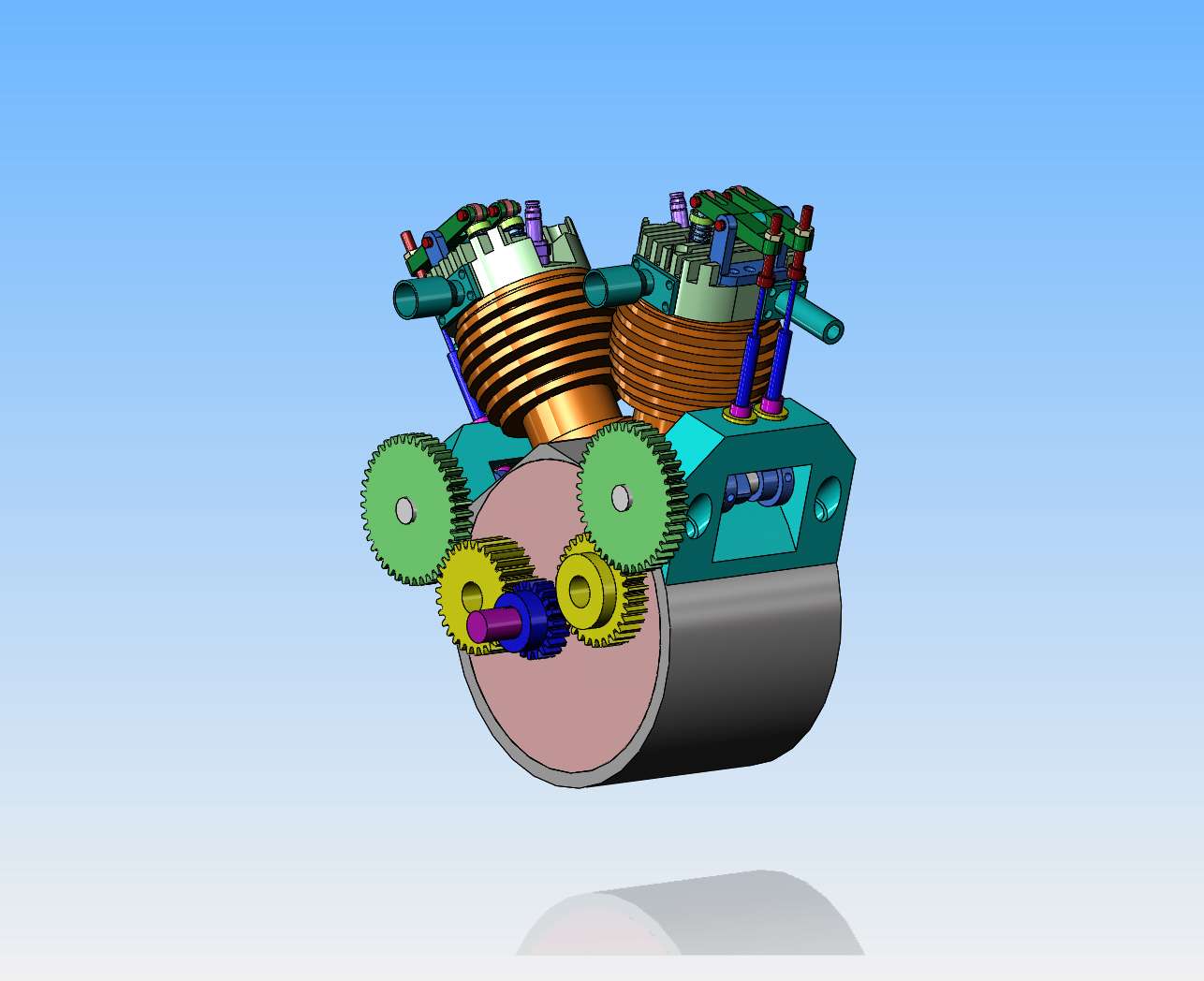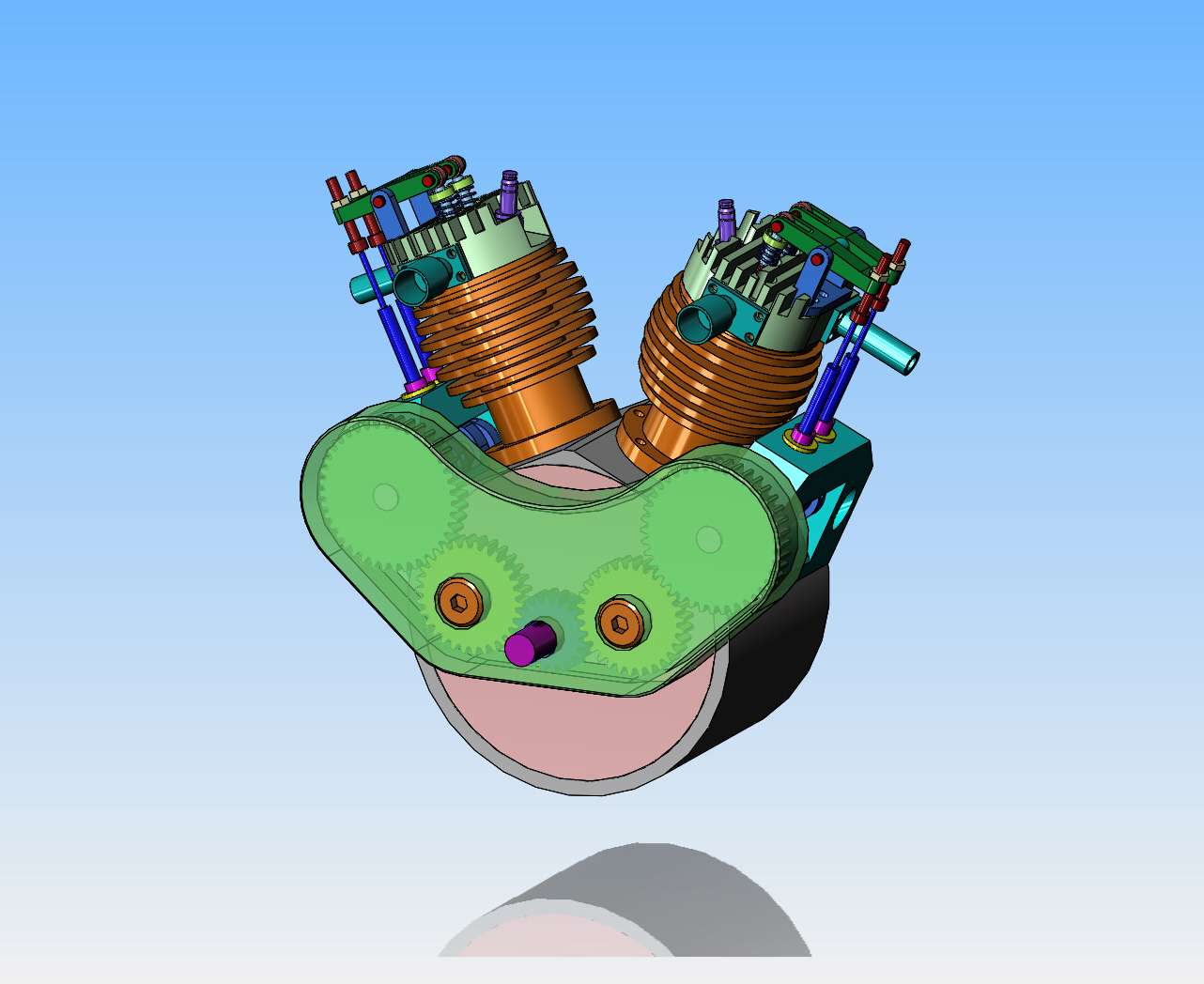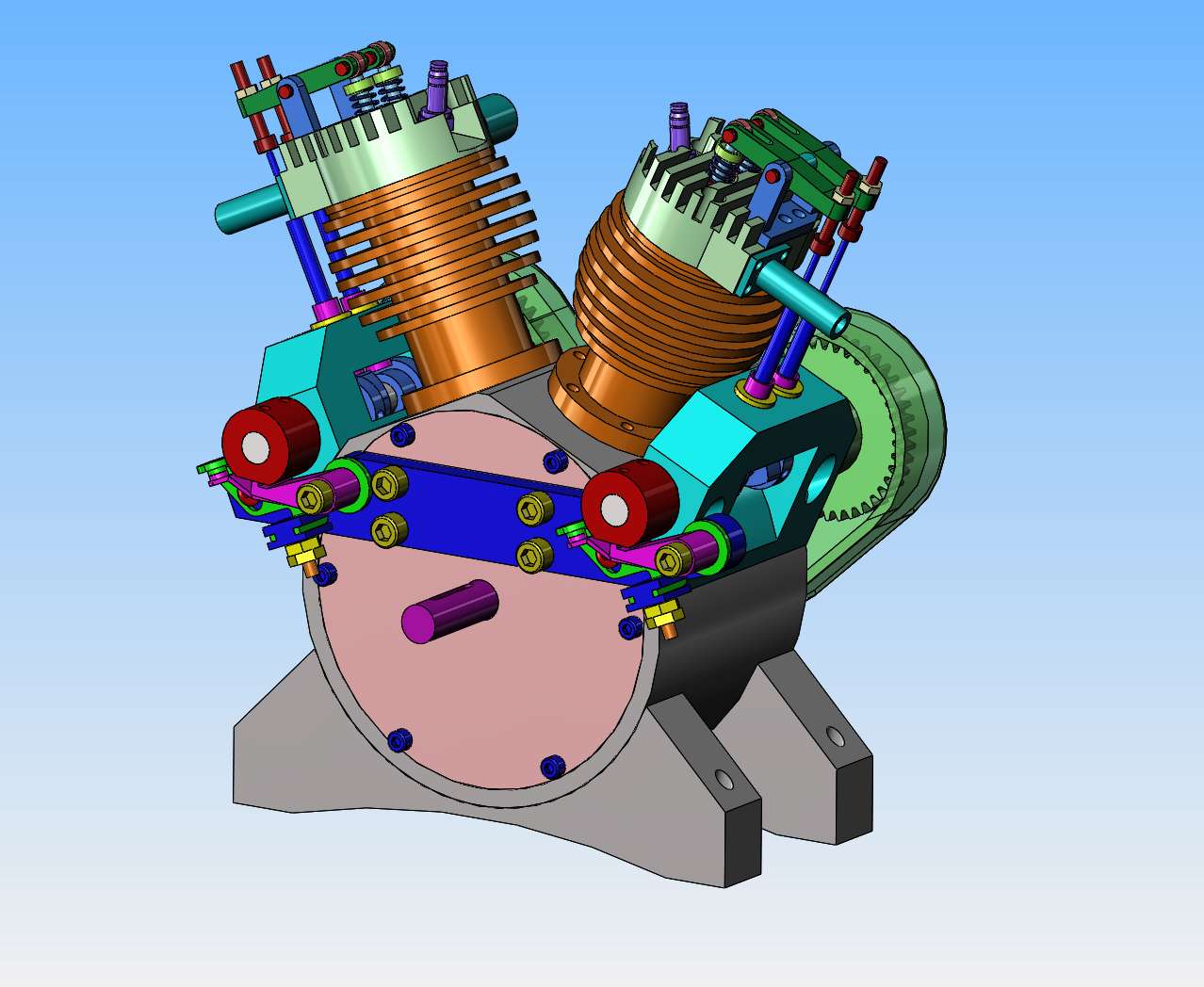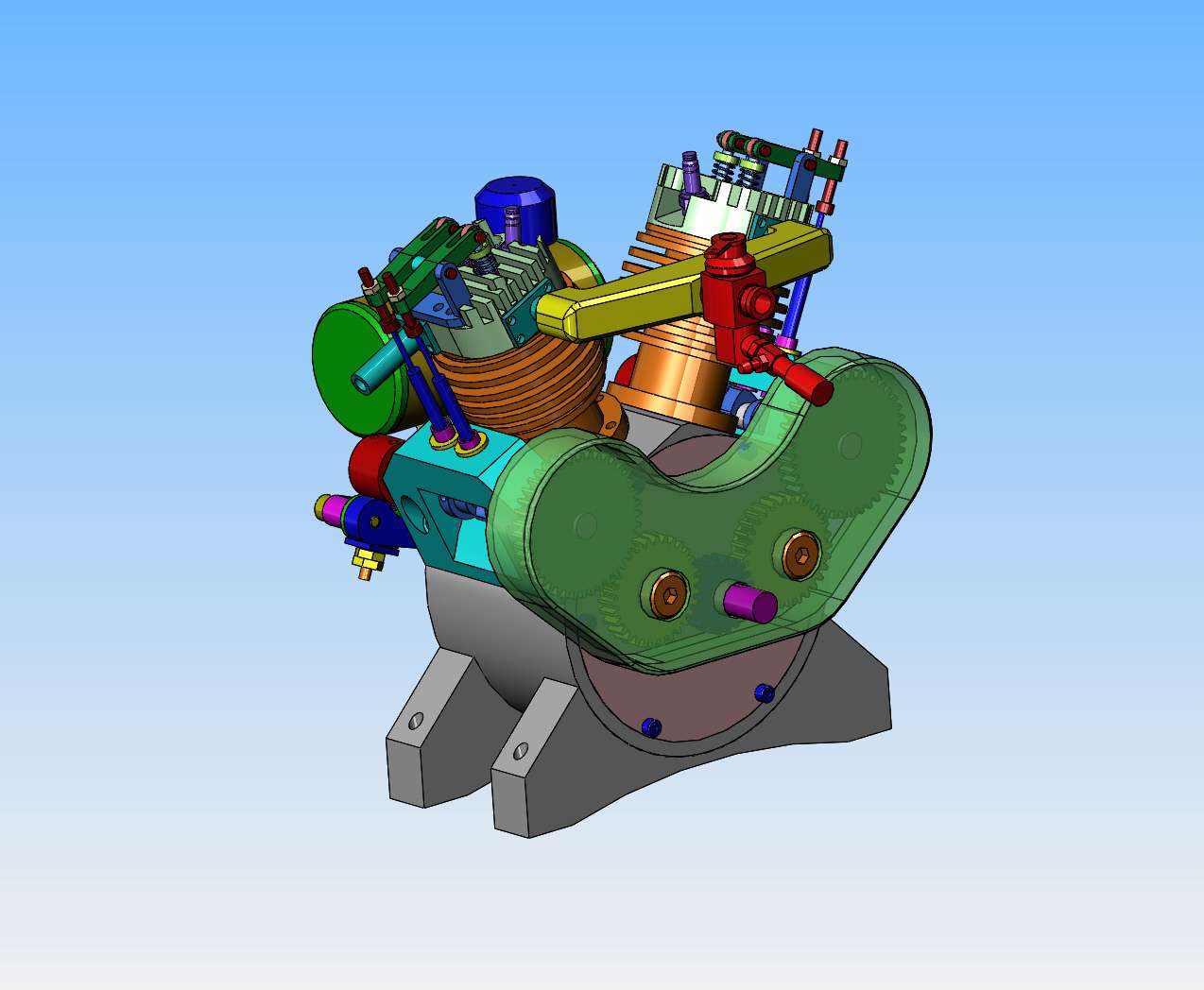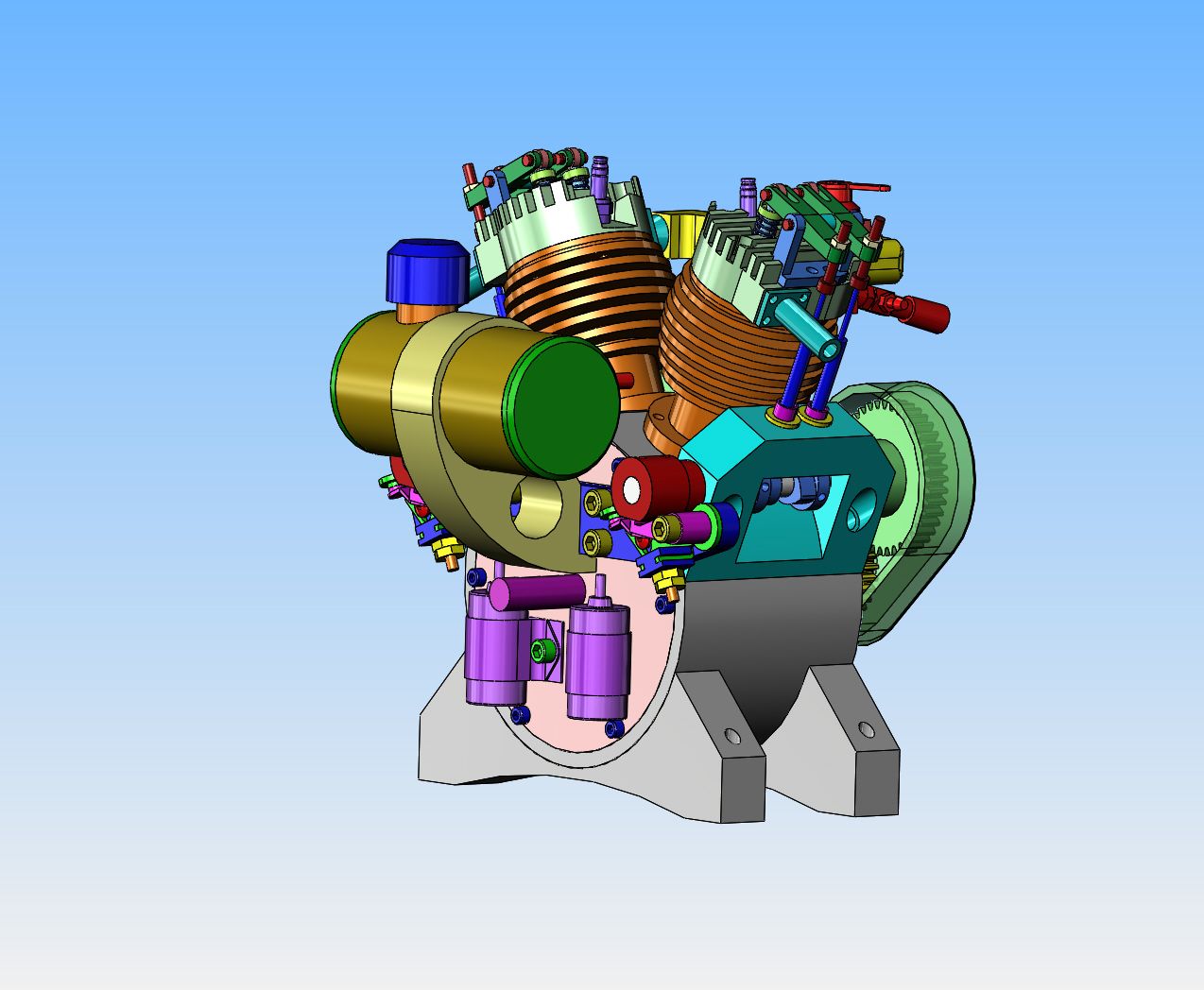I have been so impressed by RReid's build of a v-twin engine on "Model Engine Maker" forum, that I've just had to start modeling my own version. I will use the same cylinder, piston, and cylinder heads (although one of the heads has to be machined "opposite hand") as my 7/8" bore horizontal engine. It is not terribly difficult to design a V-twin engine. However, I'm thinkin' Lincoln,--what if? What if two V twin "stand alone" engines were completely finished then mounted on a common baseplate. Then, with the correct rotational aspect between the two engine crankshafts (using a Lovejoy coupling), wouldn't that make a reasonable v4 engine? I think the second engine would have to be a complete 180 degrees out of phase with the first engine to make this work right, but I'm not totally sure yet. I'm not going to build any engines this summer, but I do love to design.---Brian
